fall 2024 ART TALK





This fall, the LSU Museum of Art will undergo a re-accreditation review by the American Alliance of Museums (AAM). It has been 12 years since our last review. Earlier this summer, we submitted an extensive self-study as part of the re-accreditation process through AAM, the only organization that provides such credentials for museums. A valuable part of our preparations included creating an updated budget presentation, explaining how we utilize funding from our three primary sources: LSU, the LSU Foundation, and the Friends of the LSU Museum of Art. Additionally, 28 policies, procedures, and plans were created or updated from their original versions in 2009. Overall, this was a beneficial process for the museum, yielding advantages beyond the accreditation itself.

COVER IMAGE: Robert Spencer (American, 1879–1931), Afternoon Bathers, c. 1920. Oil on linen. Bank of America Collection.
Of the estimated 33,000 museums in the United States, only 1,099 are currently accredited, making it a true mark of distinction and honor. Our museum received its initial accreditation in 2010 under the leadership of my longtime friend Tom Livesay, the Museum’s Executive Director at that time.
This fall, AAM will assign a visiting committee to conduct an on-site review of the LSU Museum of Art. The visiting committee serves as the “eyes and ears” of the Accreditation Commission. During their visit, the committee will tour the facilities, meet with staff, board members, and LSU administration, and then file a report. The Commission, meeting in Washington, D.C., will review the committee’s report along with our submitted materials and then decide to: 1) pass the museum, 2) table the museum for further review or corrections, or 3) deny re-accreditation.
I have led two museums through the accreditation process and have conducted more than 15 visits as a member of a visiting committee for other museums. This is an important moment in the life and history of our museum. I believe we are well prepared, and I extend my gratitude to our staff who played a significant role in the preparations. Special recognition is due to our museum members, Visionary Circle Members, and major contributors who have sponsored and supported many of the improvements over the past year in preparation for this fall.
Mark Tullos Executive Director


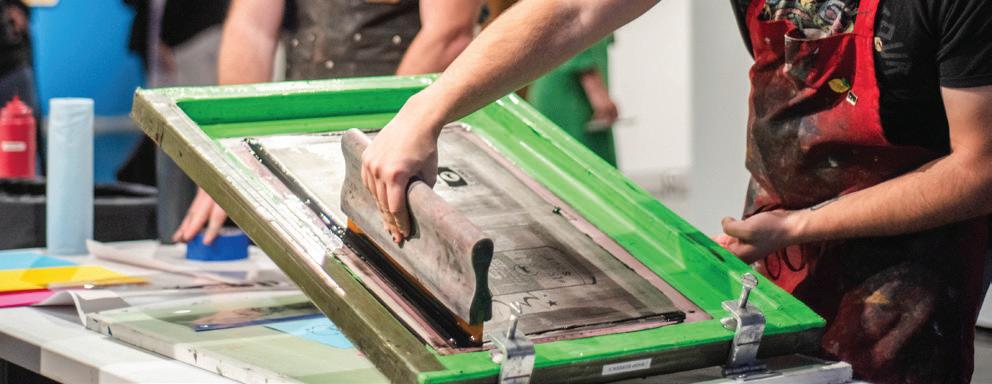
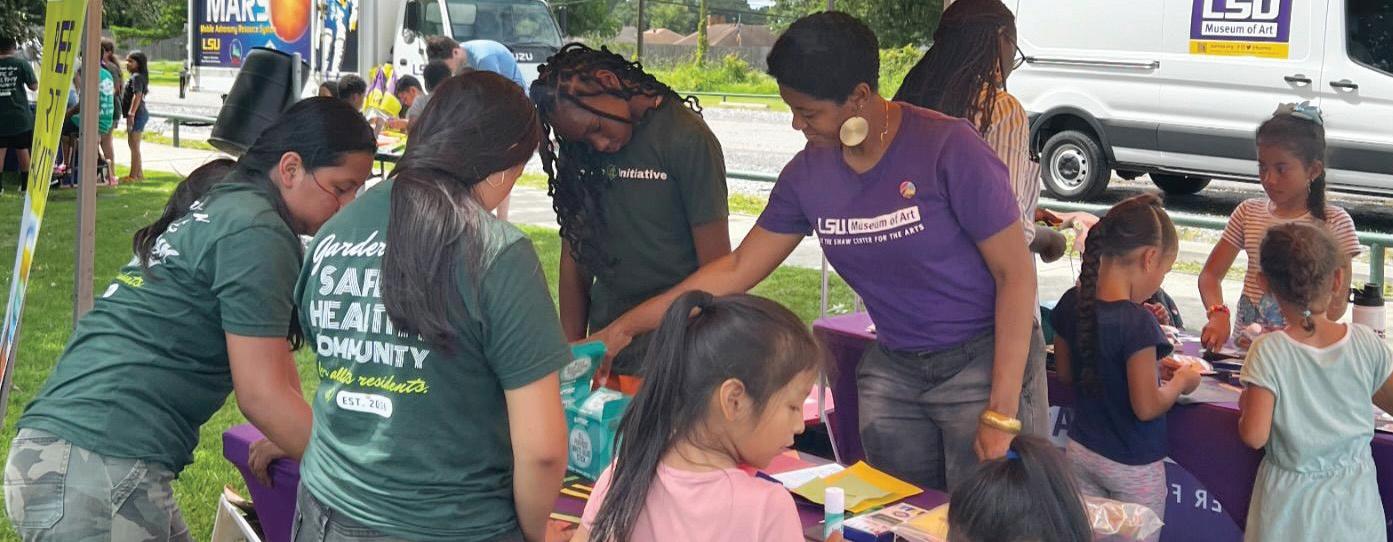



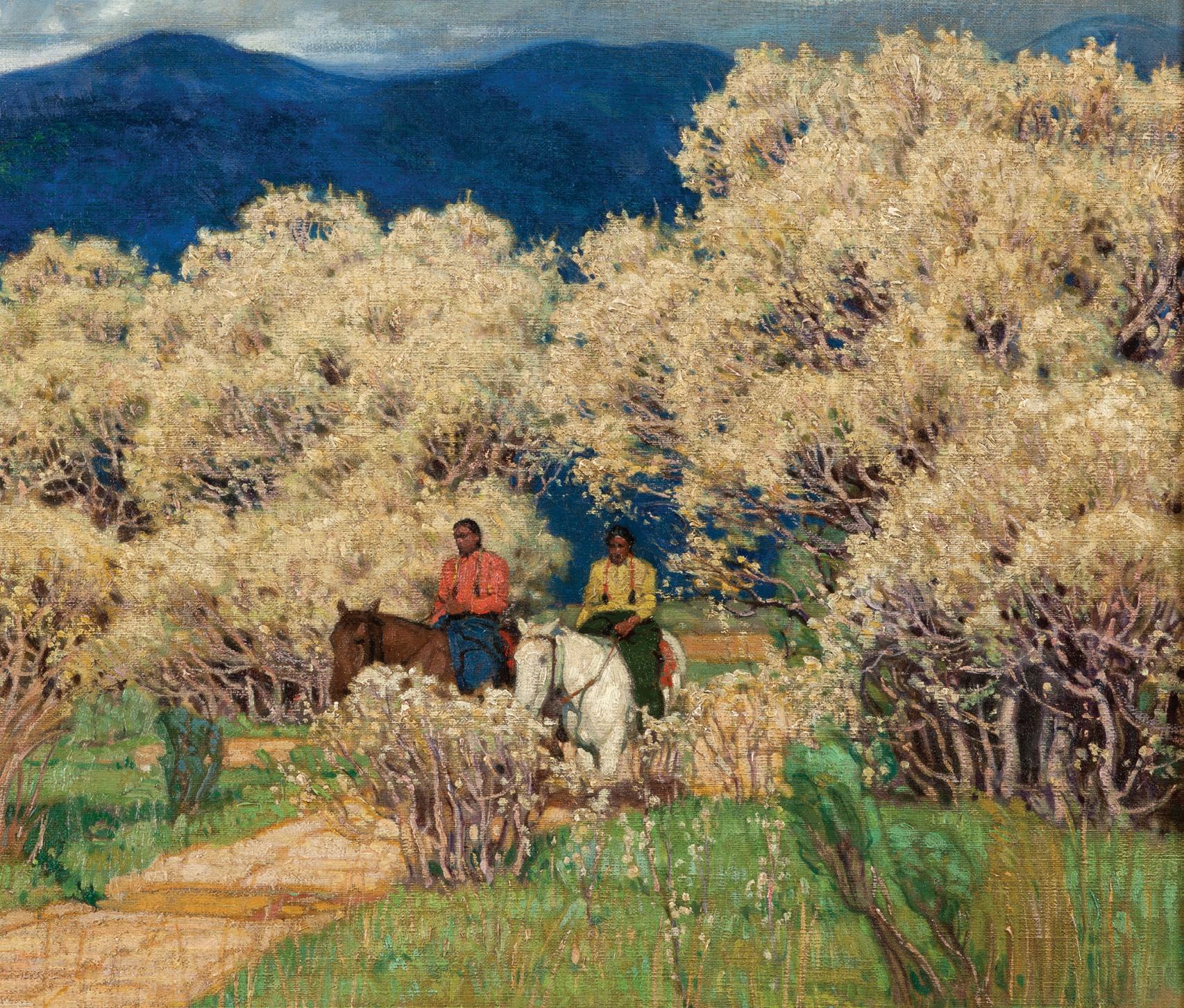

On view October 18, 2024–March 23, 2025
IMAGE (above): E. Martin Hennings (American, 1886–1956), Two Summer Riders, c. 1930s. Oil on canvas. Bank of America Collection. This exhibition is made possible through the Bank of America Art in our Communities® program.
In a New Light: American Impressionism 1870–1940, explores the dissemination of Impressionism from its French roots to the American idiom and its reinterpretation of landscape painting. While the nation at large celebrated its Centennial and reflected upon its past, American artists looked to Europe as a model for the future, reinterpreting and re-evaluating the American tradition. Artists of this period often began their training in the United States, but continued their studies in Europe, particularly in France and Germany, where they were exposed to plein air painting, or painting in the open air, and Impressionism. These artists would later translate the French genre into a uniquely American expression.
As the practice of painting en plein air grew in popularity, artists who returned from Europe to America gathered in scenic areas, establishing art colonies and summer schools where they could work and share ideas. In the East, these art colonies were found in Shinnecock and Byrdcliffe, New York; Cos Cob, Old Lyme, and Mystic, Connecticut; Gloucester, Massachusetts, and elsewhere on Cape Ann; and New Hope,
Pennsylvania. In the Midwest were Brown County, Indiana, and the Ozark Mountain region of Missouri. In the West, colonies were founded in Taos and Santa Fe, New Mexico, as well as locations in southern California, the Monterey Peninsula, and the San Francisco Bay area. Each colony produced work with distinct characteristics, while maintaining a connection to the aesthetic concerns of Impressionism.
The exhibition includes over 140 paintings and works on paper drawn entirely from the Bank of America Collection. The selection gives distinct insight into the changing nature of American art during a seventy-year period. It traces not only artistic advances toward plein air painting and Impressionism, but also the development of American landscape painting, from the second generation of Hudson River School painters to the early twentieth-century realists.
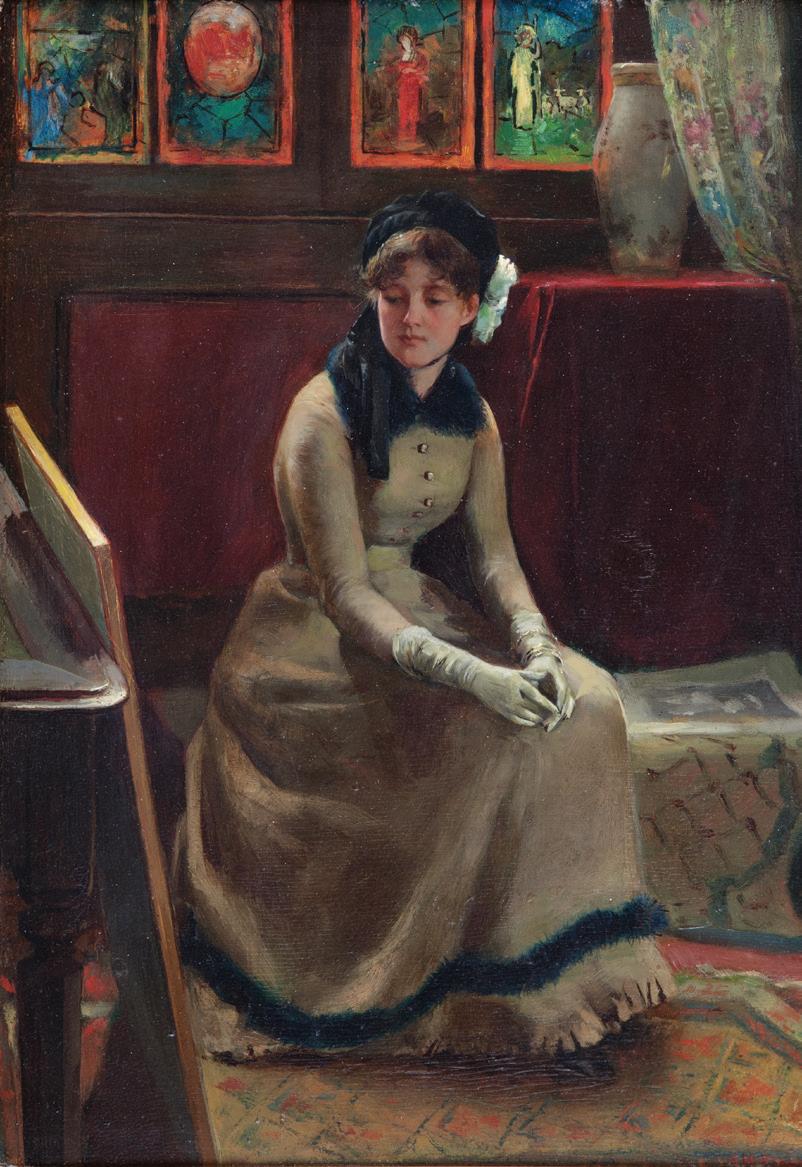
New exhibition dates—enjoy In a New Light October 18, 2024–March 23, 2025
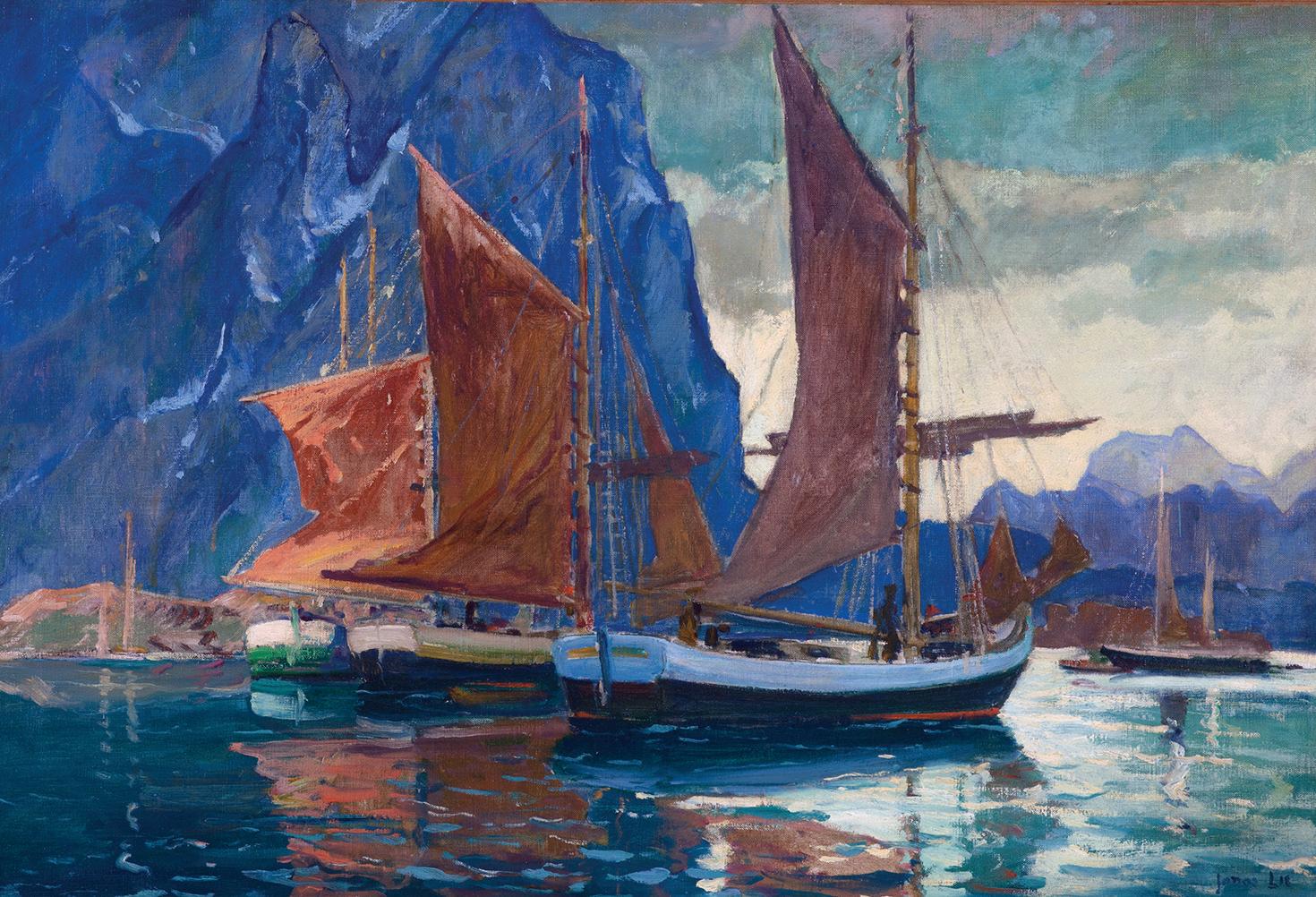

On view until October 23, 2024
This exhibition is sponsored by Taylor Porter Law Firm and the Traditional Fine Arts Organization. A special thank you to the Graves Family for generously loaning their collection.


IMAGE (above): Clementine Hunter, Untitled (Funeral Procession) (detail), undated. Oil on board. Transfer from LSU Libraries Special Collections.
Clementine Hunter lived and worked on Melrose Plantation near Natchitoches, Louisiana, a site established in 1796 by Louis Métoyer, the son of Marie Thérèse Coincoin, a former enslaved Creole woman, and Calude Thomas Pierre Métoyer. Under the latter ownership of John Hampton Henry and Carmelite “Miss Cammie” Garrett Henry, the estate was reinvented into a hub for early-twentieth century writers and artists. Having spent most of her life at Melrose, Hunter’s being was deeply intertwined with the people, activities, and culture of the plantation. As a child and adult, she worked in the agricultural fields, eventually becoming a cook in the big house for Miss Cammie. As she entered her fifties, Hunter took up painting, rendering her first composition using discarded art supplies left by a visitor. Creating in the evenings after work, the artist was prolific, producing vibrant and expressive pictures drawn from her memories of Southern life—celebrations, religious events, and routine activities. She put her marks on any surface available, such as cardboard, wood, bottles, gourds, and cutting boards. The paintings were initially collected by locals and visitors; however, by the 1970s, Hunter was well-known throughout the region for her art, attracting admirers from all over the country.
The exhibition provides a glimpse into the life of one of Louisiana’s most renowned artists, with over forty objects drawn from the Graves Family private collection and three LSU entities, the LSU Museum of Art, the LSU Rural Life Museum, and the Alexandria Museum of Art. Hunter’s paintings are a visual diary. She used art as a vehicle to preserve not only her own personal memories and feelings, but also the scenes and activities of everyday life on an evolving Southern plantation. Each artwork embodies Hunter’s unique style, celebrating her love of community, tradition, faith, and family.
ON VIEW SEPTEMBER 12–NOVEMBER 17, 2024 The showcase Southern Reflections pairs Louisiana painters Kathryn Keller and Shirley Rabé Masinter, two female artists, both working in wet media, with a passion for rendering landscapes. Keller’s quiet, diminutive scenes focus on pastoral environments, rendered in an impressionistic style. Using loose, quick brushstrokes and muted, earthy colors, Keller highlights the splendor of nature, often setting up her easel to work en plein air, creating within the landscape itself. In contrast, Masinter focuses on cityscapes, crafting realistic urban tableaux. Her tightly detailed, photorealistic canvases explore the beauty in the human-made, highlighting the grit and authenticity of inner-city New Orleans.

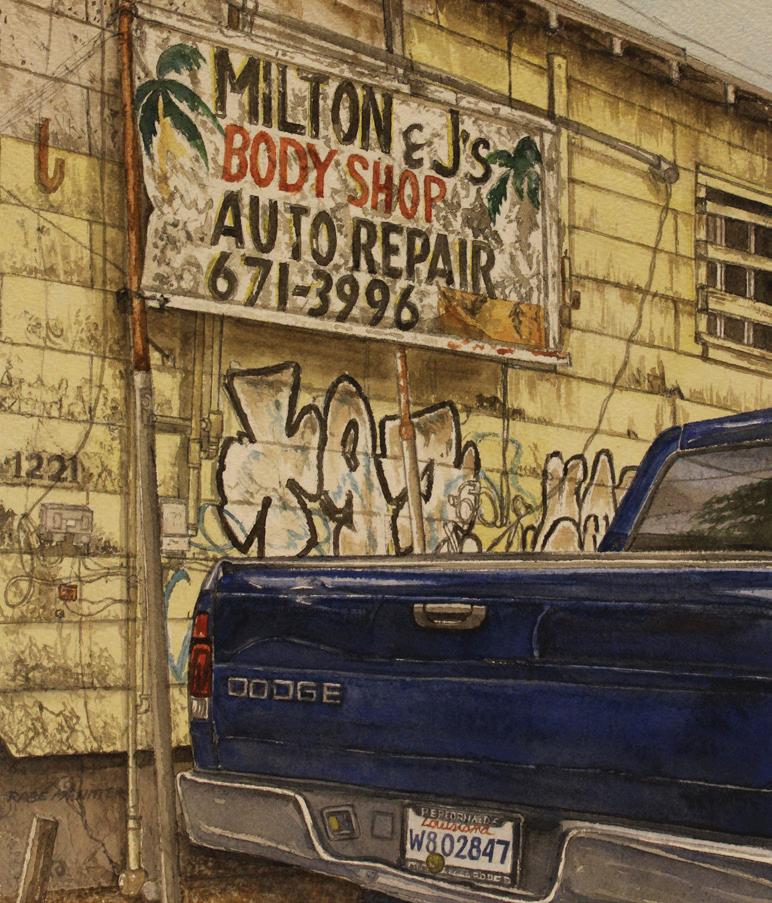
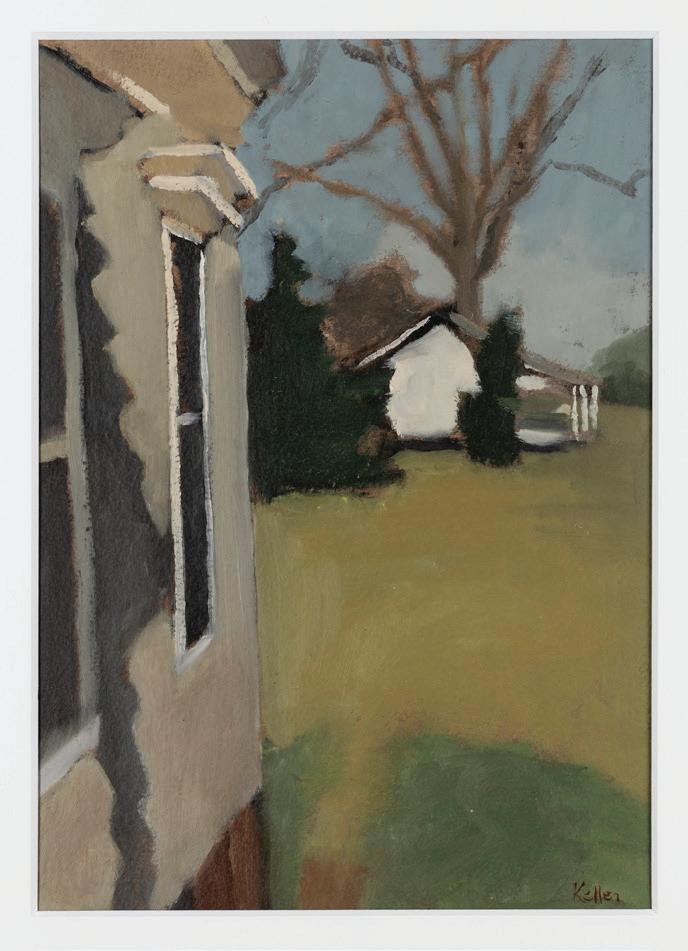

Thursday, September 12, 2024 6–8 PM • Free to attend
IMAGES (left top to bottom): Shirley Rabé Masinter, Tattoos (detail), 2014. Watercolor on paper. Courtesy of the Shirley Rabé Masinter Estate; Shirley Rabé Masinter, Milton & J's, 2018. Watercolor on paper. Courtesy of the Shirley Rabé Masinter Estate; (above top to bottom) Kathryn Keller, Front Porch, 2016. Oil on paper. Courtesy of the artist.; Kathryn Keller, Pier, 2022. Oil on canvas paper. Courtesy of the artist.
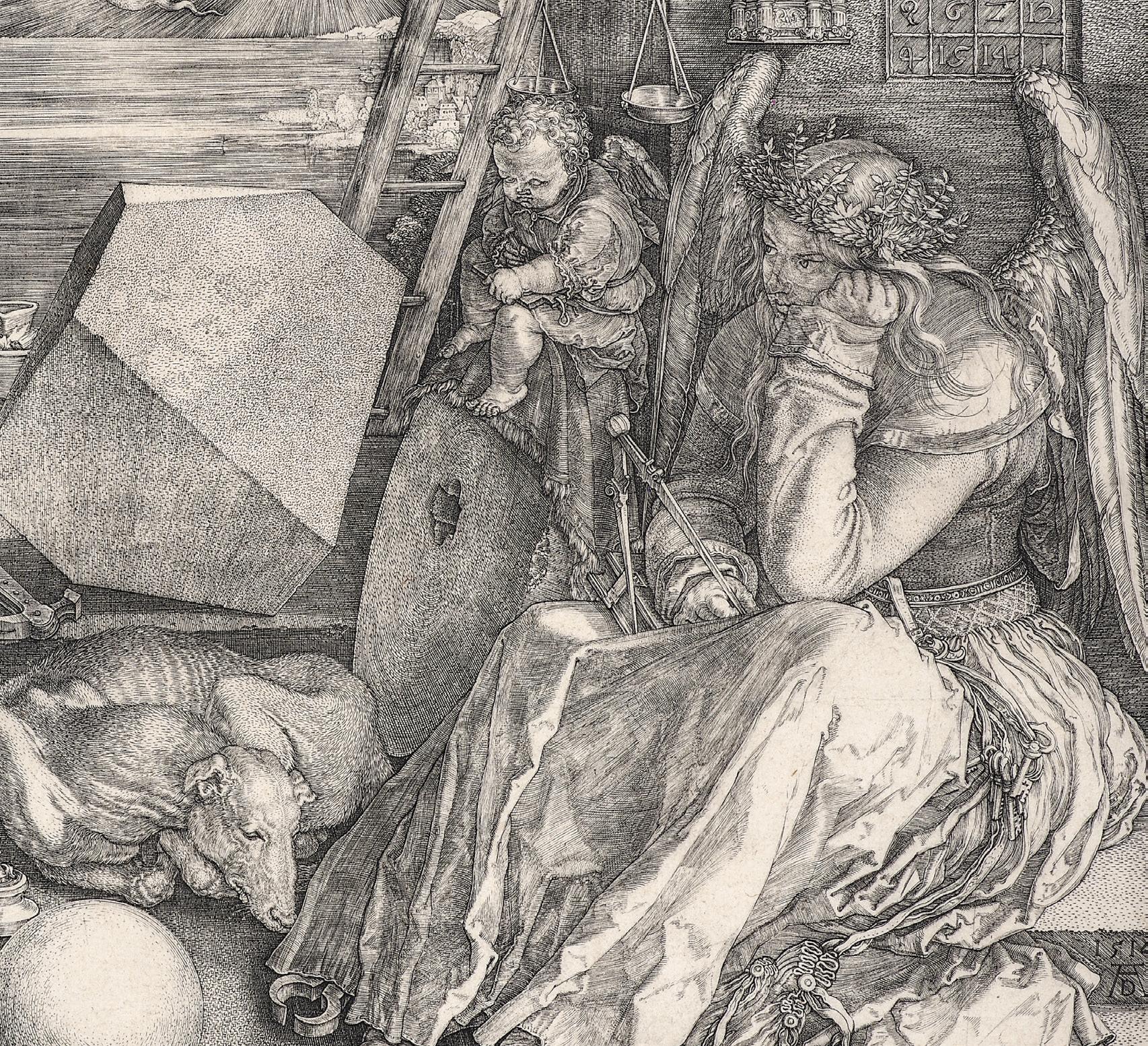
On view October 31, 2024–February 2, 2025
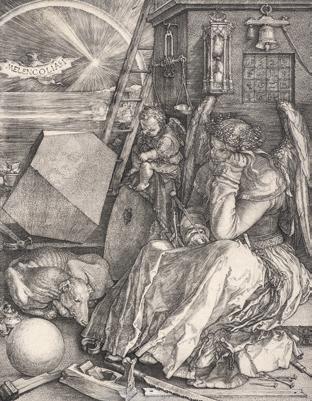
Albrecht Dürer, Rembrandt Harmenszoon van Rijn, and Francisco de Goya y Lucientes made a profound impact on the development of Western art. While separated by hundreds of years, the men are linked through the mastery of their chosen media and the development of distinctive styles and iconography.
Dürer was a renowned painter and printmaker in the Northern Renaissance. Born in 1471 in Nuremberg, Germany, the artist revolutionized printmaking in Europe, elevating the process into an accepted art form. He was a brilliant draftsman, creating highly detailed, intricate, and emotionally charged renderings of religious, mythological, and allegorical scenes using his preferred methods of woodcut and engraving.
About one hundred years later, painter and printmaker Rembrandt made his mark during the Dutch Golden Age. He established his first art studio in 1625, at age nineteen. News of his talents spread rapidly, with him receiving royal commissions for portraits and historical scenes. Rembrandt was an ardent admirer of Dürer’s work and produced hundreds of etchings and drypoints during his career.
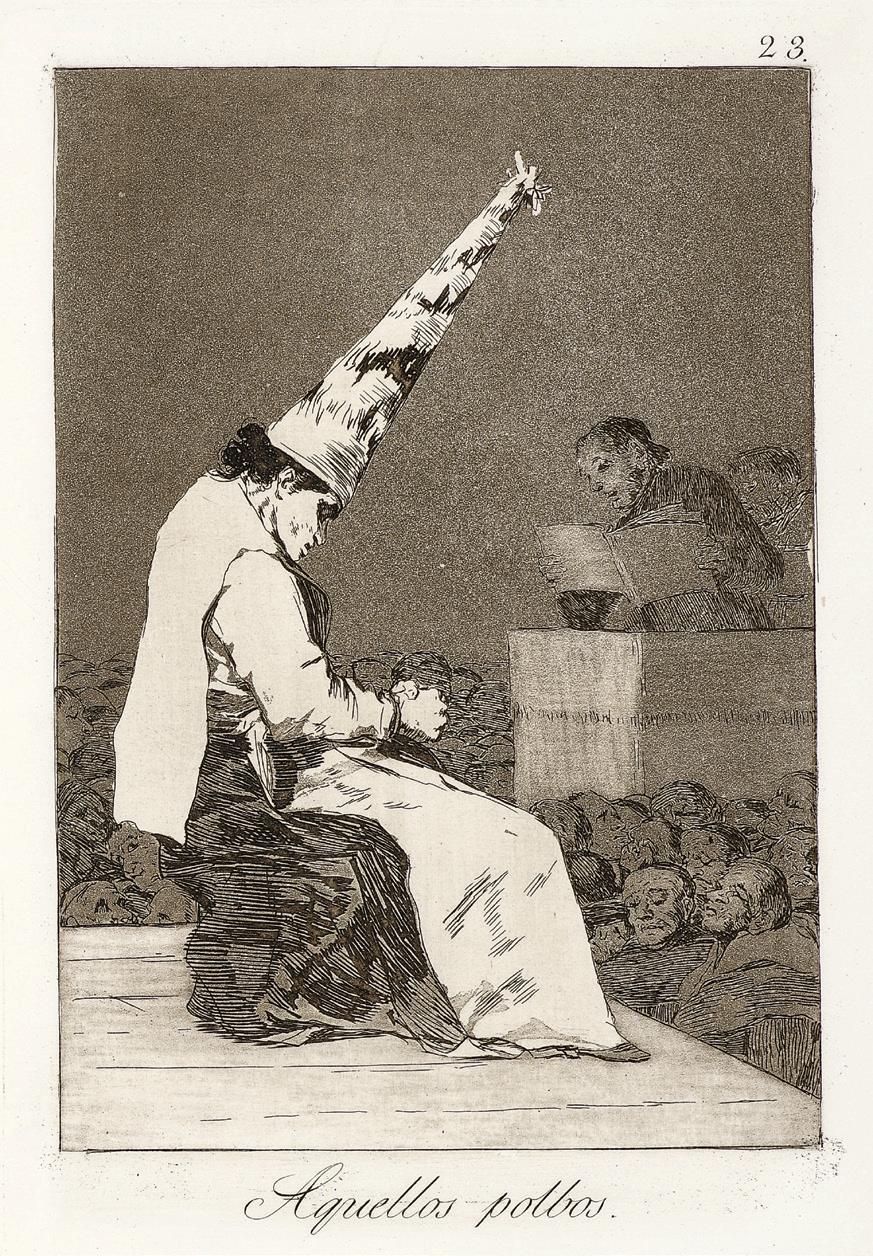
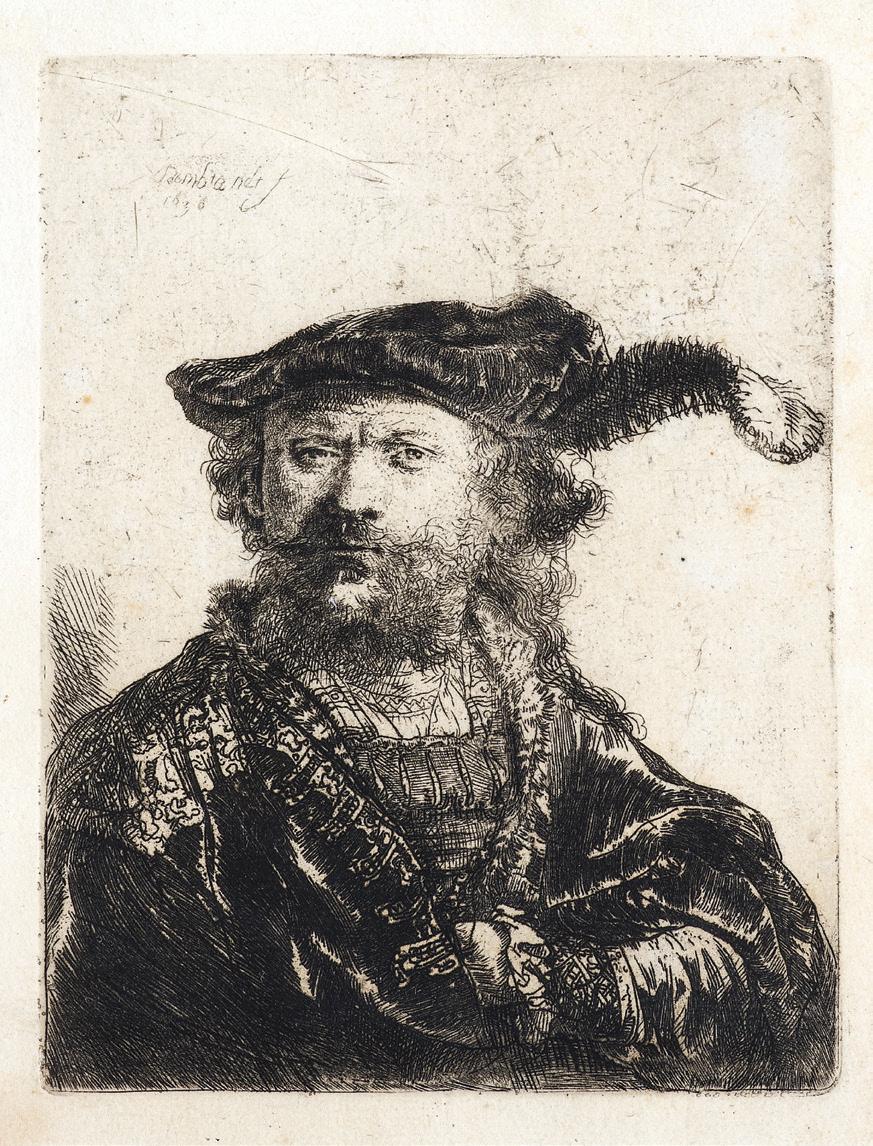
Goya once stated that he had, “but three masters: Nature, Rembrandt, and Velazquez.” Such was the Spanish master’s admiration for the Renaissance artist who had lived and worked almost a century before him. Goya established himself as a celebrated court painter during the late-eighteenth century. His focus shifted from luminous renderings of the elite class to the gritty, stark reality of fighting and political upheaval after the 1808 invasion by France and the subsequent restoration of the Bourbon monarchy. Using printmaking as a form of visual protest, Goya produced multiple series to disseminate imagery expressing the horrors of war and the absurdity of political corruption.
This exhibition was organized by Carole Sorell and curated by Leigh R. Hendry. Presented at LSUMOA through the generous support of the Park West Foundation.
Thursday, December 5, 2024
6–8 PM • Free to attend
Help us celebrate our winter exhibitions, In a New Light and The Marvel of Old Masters. Enjoy short gallery discussions, refreshments, and music, and finish up your holiday shopping with specials in the LSU Museum Store.
The Museum is committed to serving as a resource for LSU students, faculty, and staff, and continues to develop ongoing partnerships and opportunities for learning, research, and collaboration.
ORAL HISTORY PROJECT LSUMOA educator Callie Smith, registrar Marianna Luquette, and LSU doctoral student Sarah Nansubuga are collecting oral histories from the descendants of famed Louisiana painter Clementine Hunter. After receiving training from the University’s T. Harry Williams Center for Oral History, the team visited family in Baton Rouge and Natchitoches, Hunter’s lifelong home, preserving the memories of those who shared an intimate relationship with the painter. The Museum is also digitally archiving the paper files collected by her relatives, including family photos, articles, and letters, with the goal of providing public access to the materials.


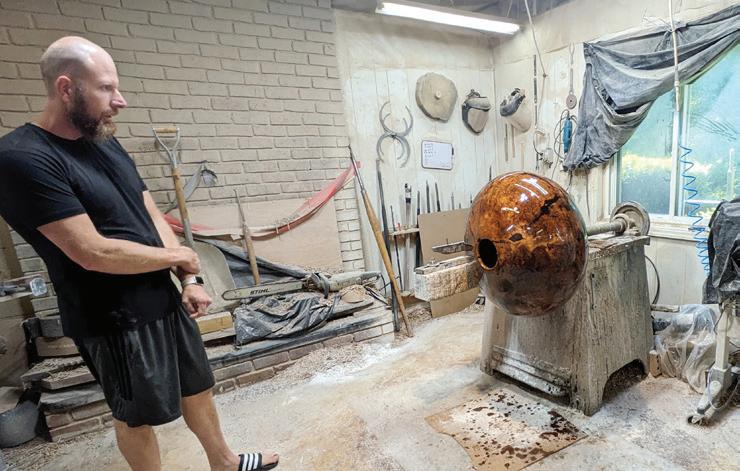
MOULTHROP BOWLS Between 1932 and 1970, Steele Burden, LSU’s landscaper, planted hundreds of oak trees across campus. Today, the roughly 1,200 oaks are integral to the University’s identity, with the first line of LSU’s alma mater referencing the trees, "Where stately oaks and broad magnolias shade inspiring halls, there stands our dear Old Alma Mater who to us recalls…” They are a cherished part of the campus experience, with many of them endowed by families and alumni.
One oak, which had a prominent position along the historic Parade Grounds before being removed due to irreversible damage, is destined to take on a new life at the hands of Matt and Philip Moulthrop. The renowned wood turners are creating one-of-a-kind bowls using branches specially selected during the felling overseen by horticulture manager Ethan Mott. The finished pieces will become part of the LSUMOA’s permanent collection and will be featured in a 2025 exhibition of work by the entire Moulthrop lineage, including Edward, the patriarch who passed his talents, knowledge, and skills to his son and grandson.
The Moulthrop Bowl Project is supported by a donation through Louisiana CAT and the Boyce family. The Clementine Hunter Oral History Project has been generously supported by grants from the Traditional Fine Arts Organization (TFAO), the New Orleans Jazz and Heritage Foundation, and the Louisiana Division of the Arts through a Louisiana Project Grant.



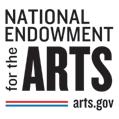


In 2016 the Museum purchased several paintings and drawings by twentieth century American artist Edward Millman. While known primarily for his images of Mexico and his many murals throughout Illinois, completed during his tenure as an artist for the Works Progress Administration (WPA) and director of murals for the state’s Federal Arts Project (FAP) in the 1930s, Millman was an official Navy combat artist during WWII. He held the unique position near the end of the conflict, from 1944–1945, and was stationed in the Pacific Theater. In this short time, he produced hundreds of drawings detailing the activities of both soldiers and the civilian population in dozens of sketchbooks. We are fortunate to own three books and a collection of ephemera detailing his service.
Museum intern Sydney Grafals, a student from the LSU Discover Undergraduate Research program, worked over the summer to investigate Millman’s wartime activities and the role of combat artists, and to interpret individual scenes recorded in the imagery. With help from Marianna Luquette, registrar at the LSUMOA, and Chase Tomlin, the associate curator at the WWII Museum in New Orleans, Grafals was able to decipher many of the sketches, most of which did not have notations or identifiers, and ascertain unique details about the people, places, and events Millman documented.
Due to the age and fragility of the sketchbooks, they cannot be routinely handled nor exhibited as single works of art. To ensure that Grafals’s efforts can be shared with the public, she created a digital flip book with assistance from Sarah Amacker, the LSUMOA’s communications and marketing specialist, which will allow viewers to examine high-resolution reproductions and access her associated research. Once completed, these materials will be added to the Museum’s website as a virtual exhibition.



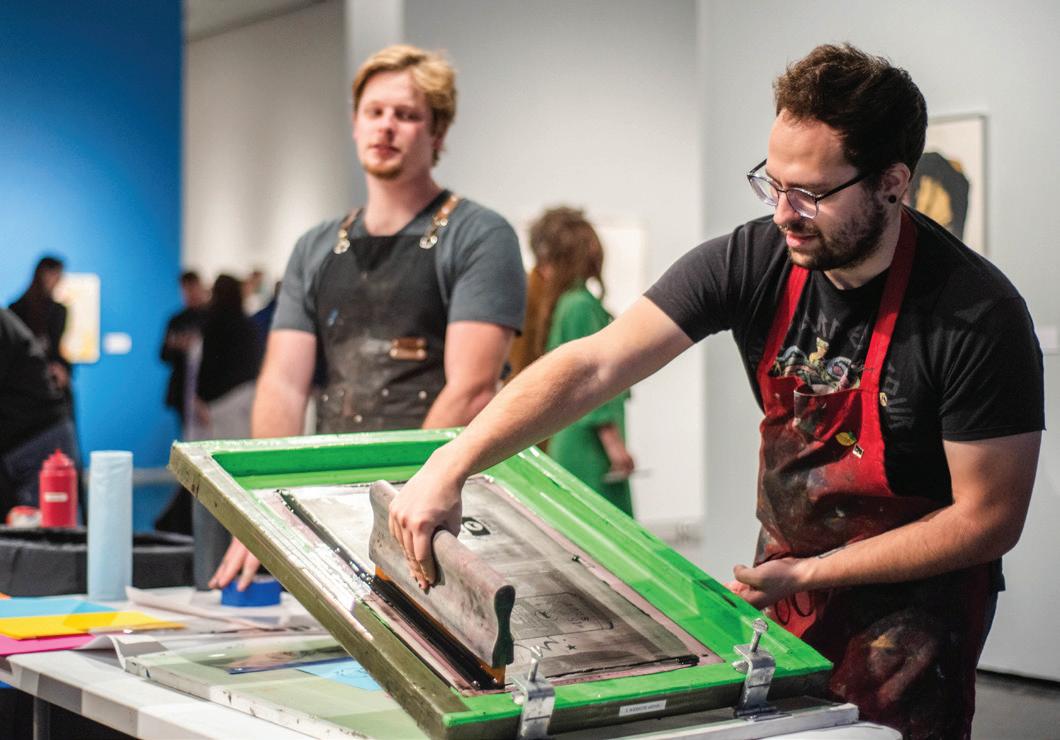
The first Sunday of each month is FREE at the LSU Museum of Art.

support provided
Access for All Day: Stitch by Stitch Sunday, September 1 from 1–4 PM • FREE • 5th floor
Join us for an afternoon celebrating America's rich tapestry of cultures and dreams. Contribute to a community textile project and more!
Access for All Day: The Art of Ceramics
Sunday, October 6 from 1–4 PM • FREE • 5th floor
In honor of the museum’s extensive ceramics collection, watch live demonstrations and sculpt your own special artwork!
Access for All Day: Printmaking Sunday, November 3 from 1–4 PM • FREE • 5th floor
Learn about different printmaking styles and create your own original print to take home!
Louisiana Icon: Clementine Hunter Wednesday, September 18 at 6 PM This lecture is off-site
Want to learn more about Clementine Hunter's life and artwork? Meet us at the Main Library on 7771 Goodwood Blvd for a lecture by LSUMOA Educator
Callie Smith as part of the library’s Special Collections Lecture Series.


Is this a real Hunter? How the FBI Solved the Clementine Hunter Forgery Case Sunday, September 8 from 2–4 PM FREE • 5th floor
Retired FBI Special Agent Randy Deaton will speak about the process of identifying and successfully catching Clementine Hunter art forgers. Don’t miss this fascinating talk! *Please note, artwork appraisal or authentication services are not available during this program, and attendees should not bring artwork to the museum for this purpose.
LSU Museum of Art's Fall Reception
Thursday, September 12 from 6–8 PM • FREE • 5th floor
Join us for an evening celebrating our Fall exhibitions featuring Louisiana women artists Kathryn Keller and Shirley Rabé Masinter, from Southern Reflections, and Clementine Hunter of the Cherished exhibition.
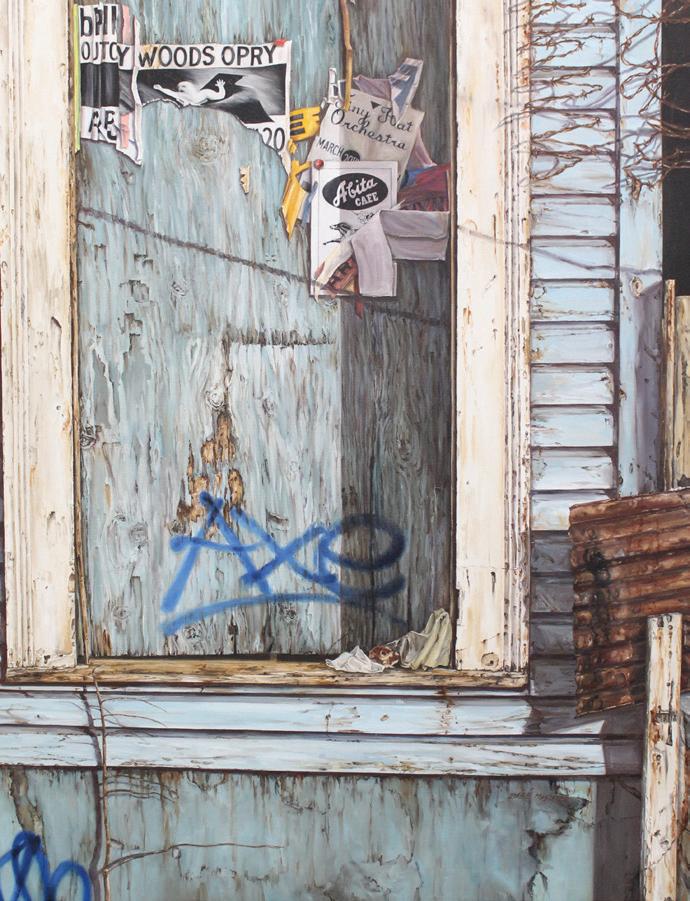
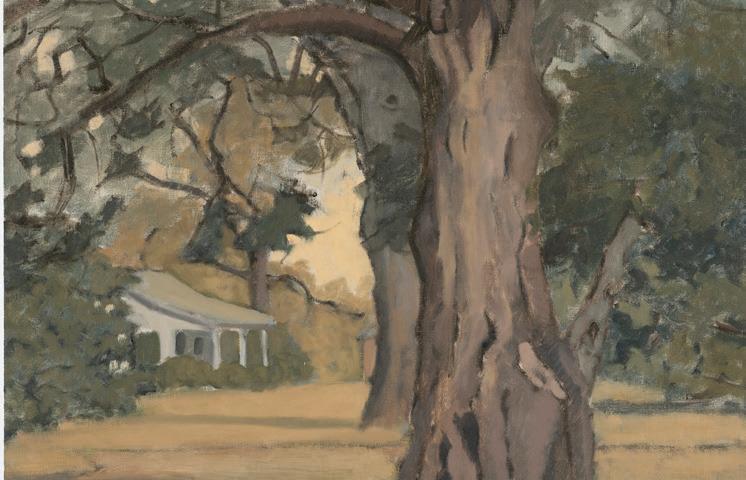
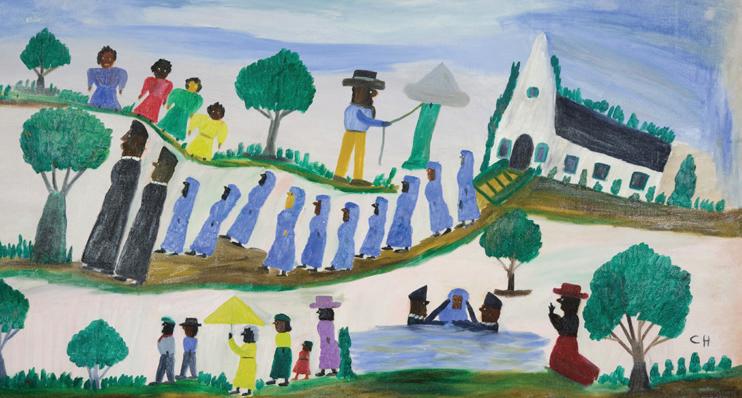
TODDLER THURSDAY PROGRAM DISCONTINUED The last Toddler Thursday was on August 1, 2024. Thanks to the Junior League of Baton Rouge for funding free admission and to all attendees. The LSU Museum of Art is now offering these activities on Free First Sundays, with free family admission provided by the Art Bridges Foundation.
A MESSAGE FROM CALLIE SMITH Ever since I assumed the position of Museum Educator and Public Programs Manager on June 17, I have looked forward to what each day holds in this new role. This summer marked the twelfth year of the museum’s Neighborhood Arts Project, a community outreach program that provides free art activities throughout the city. During June and July, over 1,068 Baton Rouge community members were served across 20 sessions at 15 sites. Each session was facilitated by local art teacher, Tyquencia Vessel, and LSU Theatre doctoral student, Sarah Nansubuga. They nurtured the creativity of participants of all ages with enthusiasm and care.
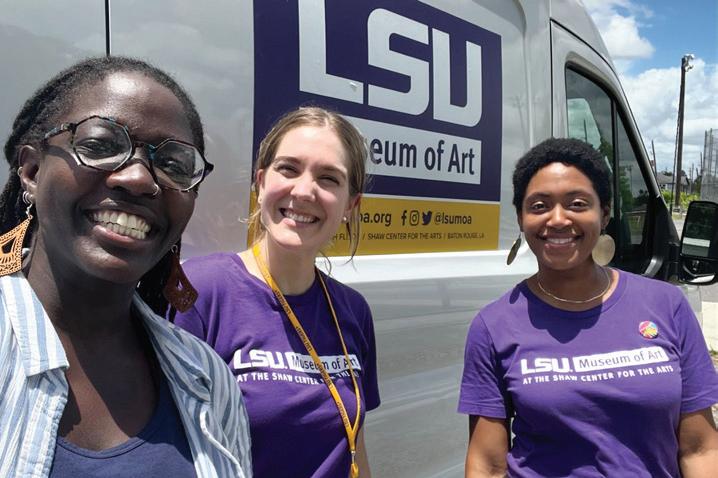


In a similar spirit, the monthly Access for All program continues to see growth. A multi-year investment and support by the Art Bridges Foundation gives us latitude to make the museum a favorite and impactful Free First Sunday destination.
Looking ahead, my priorities are to strengthen the museum’s position as a bridge between the university and the community. LSU is a place of ambition and world class achievement. I’ve got my sights set on positioning us to be a leading academic art museum that proves, through action, the value of arts-based research and engagement. Stay tuned!

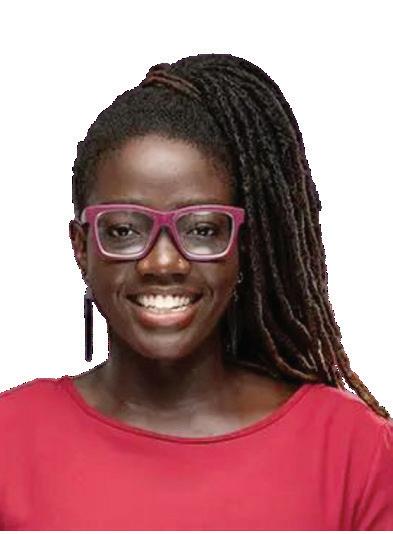
What was special to you about the Neighborhood Arts Project this summer? Exploring different parts of Baton Rouge and discovering community centers and initiatives which cater to Black and Brown communities has been quite special to witness. Community is a large part of my upbringing, especially the kind of community which favors the good of all over the good of a select few. As an international student, it has been a joy to witness and be a part of places and spaces where capitalist individualism fades away to make room for shared spaces of learning and growing. Doing this kind of community work through the arts has reminded me how powerful shared artistic spaces can be, and how relevant art continues to be to all people.
In what ways is art important to your life? Storytelling is my earliest memory of any kind of art making. My father used to tell my sisters and me bedtime stories, and stories on the way to school, and he’d make up all sorts of voices for the characters, sometimes even doing re-writes for classics like The Three Little Pigs (The Wolf was in a motorcycle gang). As I grew, it surprised me to learn that there are/were people who feared my father in a way that had never even occurred to me as something possible. His love for stories nurtured my own love for the theatre, and showed me how storytelling strips away the many ways we are taught to know ourselves, and leaves us with the resplendent beauty of our shared humanity. Through art forms like the theatre and storytelling, I have learned to know people as a collection of narratives which are continuing to evolve. It is a joyful thing to behold.
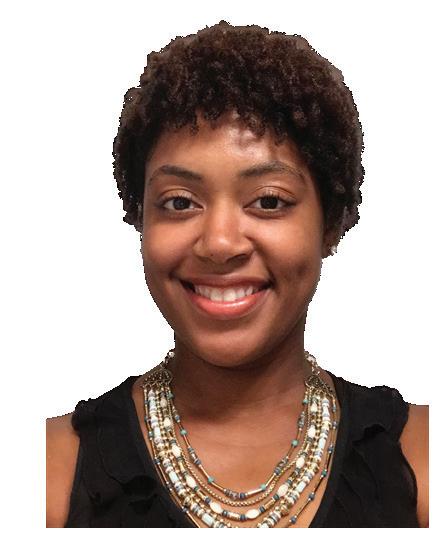
Art Teacher in Baton Rouge, LA
What was special to you about the Neighborhood Arts Project this summer? The Neighborhood Arts Project (NAP) is special to me because of its emphasis on art outreach and community engagement. NAP allows me the opportunity to connect and create meaningful experiences with others in the community. A moment that stands out to me is hearing a senior citizen say, “This is my first time doing this. You brought it out of me.” Another instance is a homeschool mom sharing her appreciation for us providing art activities that benefit her children. Inspiring creativity, interacting with people from all ages and walks of life, and seeing the joy on everyone’s faces is priceless!
In what ways is art important to your life? Art is important to my life because it allows me to express myself creatively, build community, find purpose, and inspire others to do the same. It serves as a sense of calm to what is often a chaotic world and energizes me to pursue my passions. Art provides hope, healing, and restoration. It transforms lives and transcends barriers. It is important for me to not only immerse myself in the arts, but also share the transformational power of the arts with those I encounter.
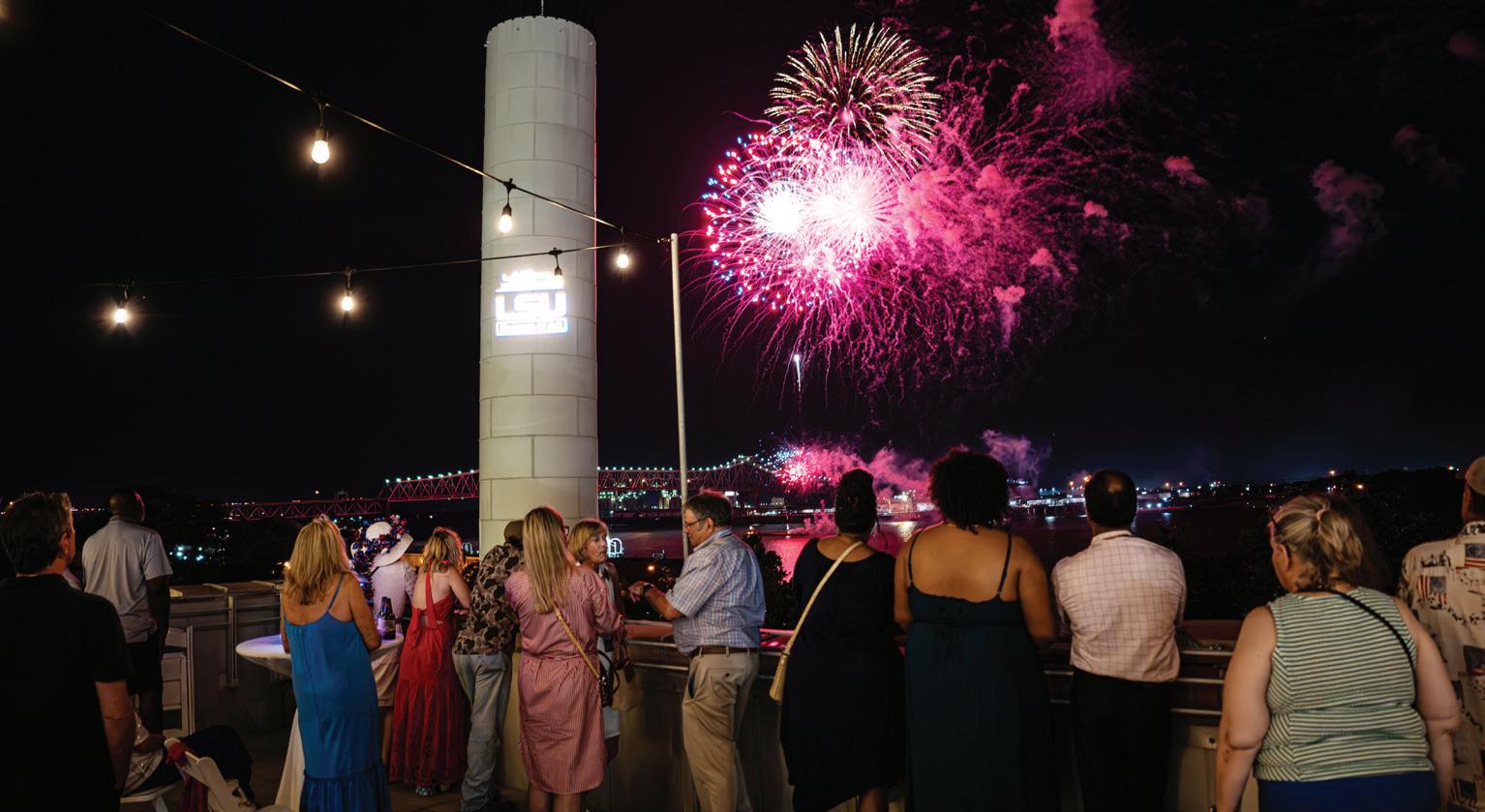
LSUMOA is grateful to everyone who joined us for the Museum's Annual Fourth of July Celebration! Special thanks to our Visionary Circle members for making our VIP Fourth on the Fourth event extra special, and to everyone who attended the 6thfloor celebration on the rooftop at Tsunami. It was a fantastic night supporting art and our community. This event would not have been possible without the support of our generous sponsors and partners: Friends of the LSU Museum of Art, Tsunami, Stroubes, Shaw Center for the Arts, Louisiana Lottery Corporation, and Country Roads Magazine. Thank you for your continued support! View more event photos on our Facebook page @lsumoa.

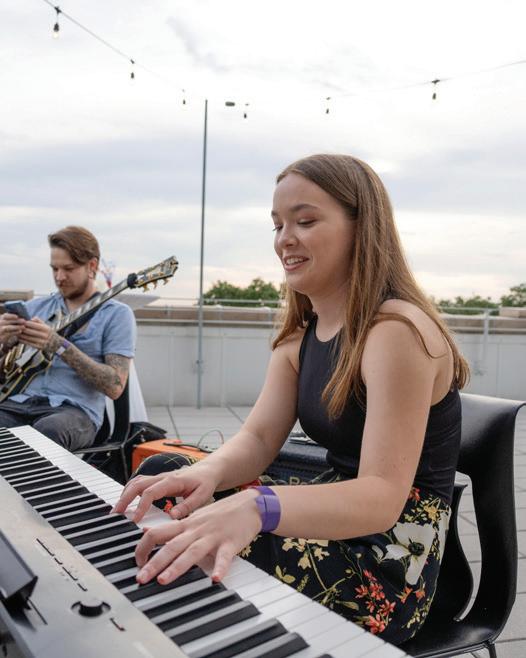
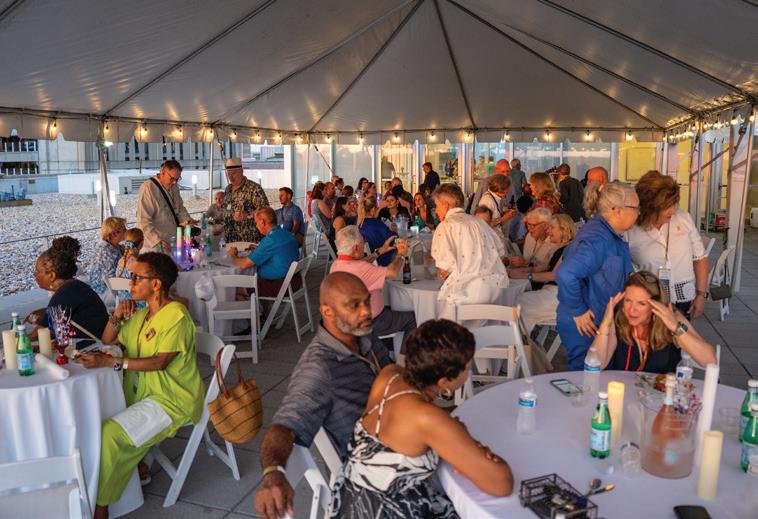
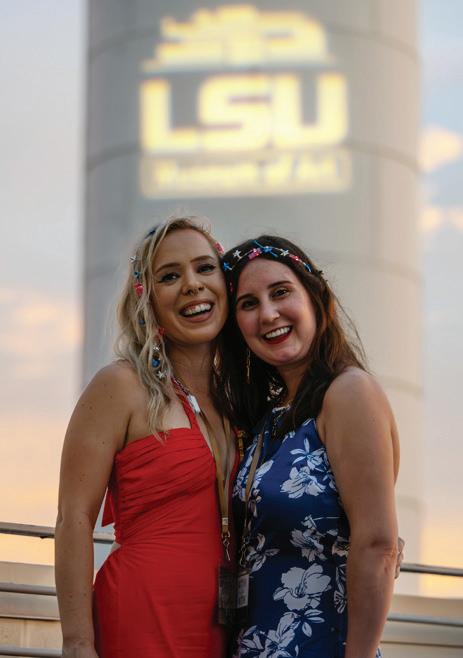

1.

November 2023
SUPPORT THE MUSEUM Since opening in March 2005, the LSU Museum of Art has been a vibrant cultural hub, bridging the University, the region, and diverse communities. Our mission is to make art accessible to all through live music, engaging lectures, innovative art, and significant historical objects. We strive to connect guests with each other, art exhibitions, and inspiring ideas.
One of the most exhilarating aspects of art museums is that they constantly evolve. We give communities continual access to exhibitions that celebrate the many ways art enriches life.
WHY YOUR SUPPORT MATTERS While half of our annual budget is funded by LSU, the remaining support comes from our members, Friends of the LSU Museum of Art, and generous foundations and grants. As we approach the end of the year, we rely on our community's continued support to transform lives through art.
Your gift to the LSU Museum of Art today will create an exciting future for the museum and every life we reach. It is thanks to the generosity of our donors that the LSU Museum of Art can be a cultural and intellectual resource that inspires more than 20,000 adults and children every year.
As Baton Rouge’s only dedicated art museum featuring local, regional, and international exhibitions alongside our permanent collection, we count on community support. Your annual gift ensures we can both meet the day-to-day demands of running a museum and pursue emerging opportunities to enhance our collection and community-focused programs.
2025 ANNUAL FUND GOALS Your 100% tax-deductible Annual Fund gift supports the Museum's daily operations and special projects, enabling us to present world-class exhibitions, educational programming, and outreach to underserved communities.
The LSU Museum of Art is proud to be home to a range of cultural treasures, from a world-class collection of Chinese jade to one of the most comprehensive public collections of Louisiana art. Donor support allows us to conserve these priceless works, acquire new pieces, enhance the museum experience for visitors of all ages, and partner with local artists and LSU faculty and students. Your gifts also fund growth in our outreach programs, which bridge resource gaps for local schools and benefit families throughout the metro area. Every dollar creates impact and adds up to help support our mission.
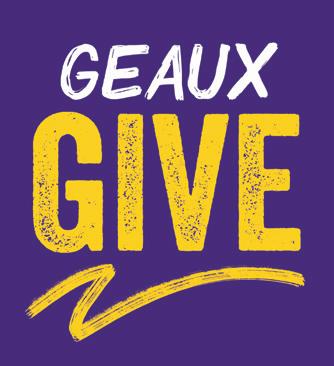
Examples of upcoming projects your gifts help fund:
⊲ Planning and reinstallation of decorative arts collection
⊲ Continue collections storage upgrades
Thank you for investing in the LSU Museum of Art. We are proud to be a vital cultural and educational resource for the greater Baton Rouge community.
⊲ Upgrade the gallery lighting system
⊲ Produce a series of collections survey publications
⊲ Redesign and rebuild our website: www.lsumoa.org
⊲ Remodel the LSU Museum Store and more
MAKE A DIFFERENCE Every donation counts. Please consider contributing before December 31, 2024, to help us achieve our vision. For questions or assistance, contact Mark Tullos, Executive Director, at marktullos@lsu.edu. Thank you for your support! 2.
Credit card


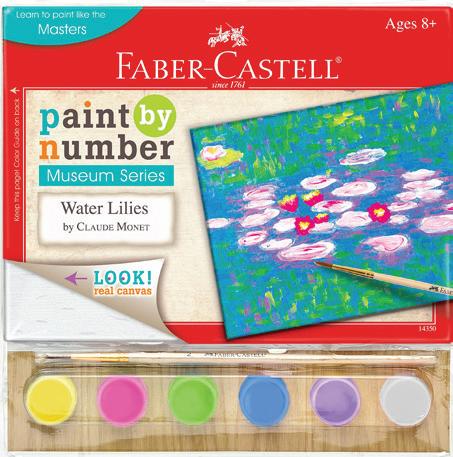


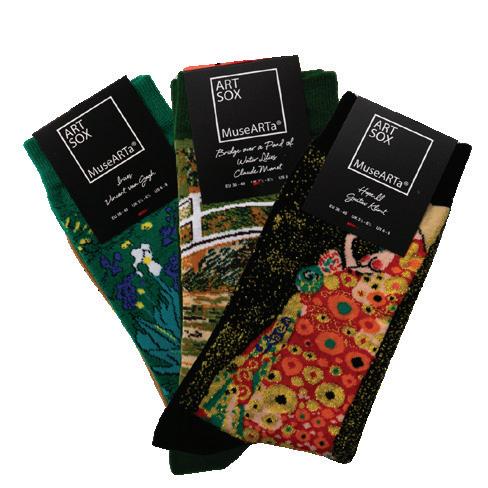
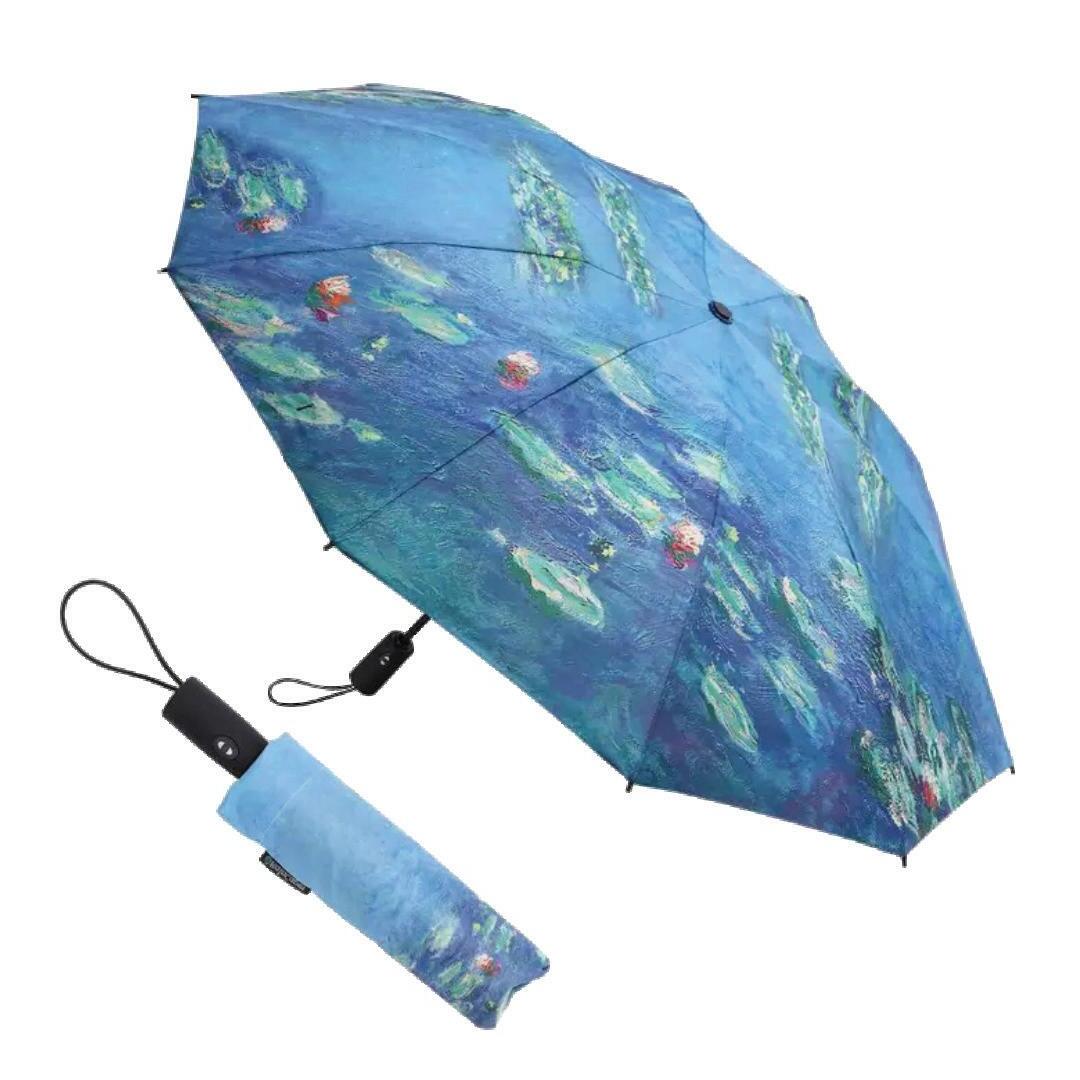
Discover the LSU Museum Store's tribute to Louisiana's revered folk artist, Clementine Hunter. Immerse yourself in the beauty of her artwork through meticulously crafted linen tea towels, each hand-embroidered to showcase Hunter's iconic style. Experience her renowned paintings transformed into exquisite hand-blown glass ornaments by Gitter Gallery. Don't miss the opportunity to explore Cherished: The Art of Clementine Hunter, on display through October 23, 2024.
For our upcoming exhibition, In a New Light: American Impressionism 1870–1940, featuring works from the Bank of America Collection, the LSU Museum Store offers something for every member of your family. From impressionist-inspired art adorning socks, ties, scarves, and umbrellas to engaging paint-by-numbers craft kits for children, there's a treasure waiting to be discovered.
Conveniently located on the first floor of the Shaw Center for the Arts, the LSU Museum Store invites you to delve into these exceptional collections. For more details, please contact LeAnn Russo at 225-578-3038 or email lrusso@lsu.edu.
Geaux Subscribe for the latest from the LSU Museum of Art
Subscribe to the LSU Museum of Art’s e-newsletter for the latest on programs and exhibitions, delivered straight to your inbox. Scan QR code or visit https://bit.ly/lsumoasubscribe

Mark Tullos, Executive Director
Sarah Amacker, Communications & Marketing Specialist
LeAnn Dusang, Museum Store Manager / Visitor Services Manager / Rentals
Nedra Hains, Director of Operations & Visitor Services / Membership Coordinator
Marianna Luquette, Registrar
Sandy Parfait, Business Manager
Travis Pickett, Preparator
Michelle Schulte, Chief Curator
Callie Smith, Educator & Public Programs Manager
President: Clarke J. Gernon, Jr.
Secretary / Treasurer: Jim Fairchild, CPA
Brad M. Bourgoyne
Jeff Bell
Leone Elliott
Claire Major
Ann Wilkinson
Brad Way
Chair: Ben Jeffers
Vice Chair: Elizabeth Noland
Secretary / Treasurer: Stephen R. Miller
Immediate Past Chair: Nancy C. Dougherty
Margaret Benjamin
Dan Bergeron
Luisa Cantillo
Renee Erickson
Becky Gottsegen
Blaine Grimes
John Haile
Randell Henry
Gerri Hobdy
Yvette B. Marsh
Winifred Reilly
Laura A. Siu
Darius Spieth
Carol Steinmuller
Ex-Officio: Clarke J. Gernon, Jr.
Ex-Officio: Mark Tullos
Office of the Lt. Governor Representative:
Susannah Bing Johannsen
Honorary: Lt. Governor Billy Nungesser
Installation and special event photography by Charles Champagne
Become an LSU Museum of Art Member Today!
Join the LSU Museum of Art and access all the benefits, now with convenient digital membership cards. Join now at www.lsumoa.org/membership.
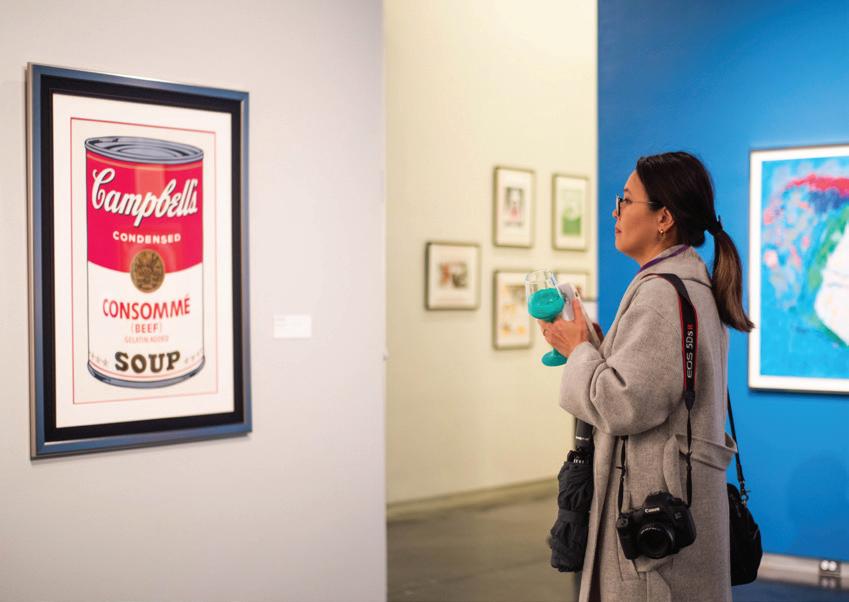
Explore the Shaw Center for the Arts, located on 100 Lafayette Street in downtown Baton Rouge. We look forward to welcoming you to the Shaw Center for the Arts!
⊲ LSU Museum Store Shop for unique gifts and art-related merchandise.
⊲ LSU College of Art + Design Glassell Gallery Discover rotating exhibitions from emerging and established artists.
⊲ Manship Theatre Enjoy a variety of performances, including music, theater, and film.
5th Floor
⊲ LSU Museum of Art Experience a diverse collection of visual arts through engaging exhibitions and programs.
6th Floor
⊲ Tsunami Sushi Savor delicious sushi and stunning views of the Mississippi River.




100 Lafayette Street, Fifth Floor Baton Rouge, LA 70801

HOURS Tuesday through Saturday: 10 a.m.–5 p.m. Thursday and Friday: 10 a.m.–8 p.m. Sunday: 1–5 p.m. Closed Mondays and major holidays
LSU Museum of Art is supported by a grant from the Arts Council of Greater Baton Rouge, funded by the East Baton Rouge Parish Mayor-President & Metro Council; and in part by a grant from South Arts in partnership with the National Endowment for the Arts. LSUMOA thanks the generous donors to the Annual Fund. Generous support provided by Art Bridges Foundation’s Access for All program. Free Friday Nights is sponsored by the Louisiana Lottery Corporation.


